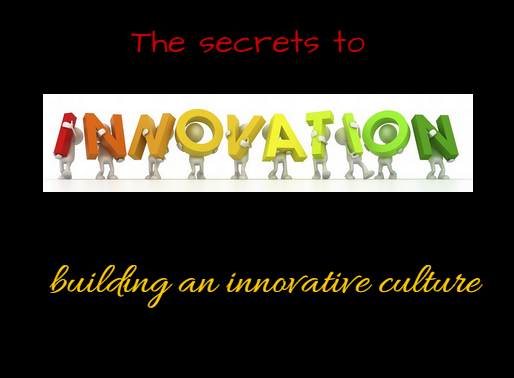A mind is like a parachute. It doesn’t work if it is not open to new ideas. What is innovation to you?

Thinking about improving the adaptation of your business to the changing elements around you? You have a large innovation continuum that you should consider.
Where is your focus? Invention? Innovation? Creativity? Or maybe somewhere else on the continuum?
More to know: Amazon and Managing Innovation … the Jeff Bezos Vision
Check out our thoughts on building innovation.
We are always surprised by the number of our people that don’t make a distinction between these concepts. Do you make the distinction?
A clear distinction and your appropriate action focus will definitely make a difference to your business. Let’s us explain why.
Creativity is your ability to imagine new concepts. It does not require value creation. That is why when we run brainstorming sessions, we do not allow concepts to be screened for merit.
We are being divergent and looking for all possible ideas. Creativity plays an important role in both invention and innovation but is only the front end component of each.
Invention and innovation. They have been so thoroughly misused that it is hard to tell the difference between them. Yet they could not be more different.
Innovation is the process through which value is created and delivered to a community in the form of a new solution. We have purposely chosen to frame the definition as a process. It can also be used to describe a new product or service … the output of the process.
In either case, the key elements of the meaning are valuing delivery and newness.
Invention is very distinct from innovation. When a new idea surfaces or a new patent is filed, that is an invention. It is the classic eureka moment when a person has an idea for the better mousetrap and sets about creating it, putting off concern about who will buy it for another day.
Business model innovation is a source of competitive advantage that few companies proactively pursue. It, however, is not necessary to entirely replace a business model or radically reinvent the business in order to capture value from innovation.
Business activity can be viewed as a continuum from incremental improvement to the invention of an entirely new business Between these extremes are three additional levels of innovation, distinguished by the degree to which they redefine the existing business model.

What is innovation … incremental improvement
Focuses on re-engineering the existing business model—doing what we already do, only better, faster or cheaper.
Although important to the ongoing success of the business, these efforts create fewer consumer and competitive benefits than innovative activities, and they have little to no disruptive effect in the market.
Single-dimension innovation
This represents a pioneering change in an existing business model. It is designed to deliver substantially enhanced consumer benefits and financial performance. This level of innovation causes some degree of disturbance in the market (for example Amazon’s e-commerce process innovations).
Examples of innovation … serial innovation
Serial innovation builds on the success of an initial business innovation by expanding the scope of what is considered for future innovation.
Through continuous adaptation of the business model, the company harvests progressively more of the benefit of the original innovation (e.g., the expansion of Amazon’s move from books and music to other products and services).
Multi-dimension innovation
Multi-dimensional innovation creates a substantially new way of doing business in order to optimize the market opportunity. Innovation at this level is essentially building something completely new from scratch.
It affects change in multiple components of the business model simultaneously. Business model innovation often propels a company beyond the boundaries of its original marketplace through the offer of products and services previously unavailable to customers.
It typically requires new processes, organizational structures, and distribution channels. Business model innovation disrupts existing patterns of consumption and competition (for example, Dell’s direct-to-consumer customer selected design business model).

Innovation vs. invention … a business invention
The business invention refers to a revolutionary change or strategic breakthroughs that create entirely new businesses. Such inventions represent “white space” in the market.
They transcend customer desires by serving needs and wants that have not yet been articulated.
They change the basis of competition by creating value where none existed before (for example, Apple’s pioneering the i-phone).
The greater the degree of innovation (i.e., the farther right on the continuum), the greater the competitive disruptions and the higher the potential rewards for consumers and stakeholders.
For most companies, however, applying innovative thinking to the company’s entire business model is too difficult to conceive, too risky to undertake and too hard to implement on a recurring basis. Innovations that truly revolutionize an industry come along only about once a decade.
Most of us, therefore, primarily focus on those business application innovations that provide customer benefits based on the company’s existing competitive advantages. These innovations do not require recreating the wheel or predicting the future.
They do require a genuine focus on the customer and a commitment to more effectively meeting customer requirements.
Here are the key assumptions we use in characterizing business application innovations:
Innovations are driven by the market
As we have discussed, shifts in demographics, social, economic and/or technological conditions often precede or accompany innovation in an industry.
True innovation represents an advance for consumers
Great business innovators improve the quality of life for their customers. As a result, they also have an impact on competitors and the structure and performance of the whole industry.
For example, “category killers” and supercenters forever changed consumers’ expectations about selection and price and as a result, shopping behavior and store preferences.
Inventors often aren’t the winners
An innovative idea doesn’t necessarily have to originate with you. Often, it is a new application of an existing idea. As the above retail innovation examples illustrate, inventors often aren’t the winners in the end.
Innovation in often means being a fast follower rather than the originator of a new way of doing business. Walmart’s supercenter format was not an original idea—the basic concept had been operating successfully for 25 years in Europe.
But it represented an innovation for Walmart as used in the context of its own business and its own market. Innovators teach us that to succeed we don’t need genius as much as curiosity and determination.
Innovation continuum … all strategies eventually run out of gas
In an environment characterized by frequent and significant shifts in resource and consumption markets, just doing better what you do today is not enough.
A focus on matching and beating your rivals results in strategies that are all too similar and competition that is based on incremental improvements rather than breakthrough ideas. Competing head-to-head is intense.
Innovative companies break from the competitive pack by staking out fundamentally new market space. Successful innovation can expand the market, build new markets, as well as increase market share for the innovator.
Continuous business innovation is the key not only to value creation for consumers but also to wealth creation for stakeholders and the true long-term success of the firm.
The bottom line
The truth is that innovation is never a single event. It requires the discovery of new insights, the engineering of solutions around those insights, and then the transformation of an industry or field. Technology does not produce progress by itself, we need to find important problems for it to solve and then must change how we work in order to take advantage of it.
So while smartphone apps are cool and add convenience to our lives, the real impact of digital technology lies in front of us, when second-order technologies are applied to completely new problems.
